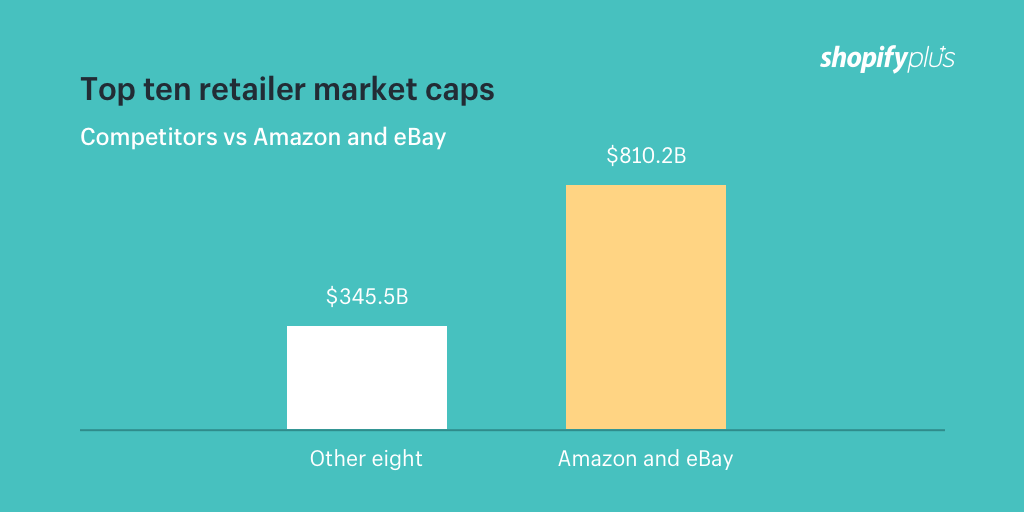Does the thought of competing with Amazon or eBay scare the Bezos out of you?
For most online businesses — and especially among traditional brick-and-mortar retailers — the answer is: of course. (Or, if we’re being blunt, hell yes it does.)
The reasons are obvious …
Taken together, eBay and Amazon’s market caps dwarf the combined value of all eight other top-ten enterprise retailers. Perhaps more startling, analysts expect the behemoths to command 50% of all ecommerce sales by 2021.
Alongside sheer size, merchants on Amazon list (1) loss of my seller privileges, (2) Amazon selling my items, and (3) negative customer feedback as their top concerns:

And yet, if you’re serious about extending the reach of your products and presence, multi-channel ecommerce is non-negotiable. Simply put, the more channels you’re on, the greater your revenue.
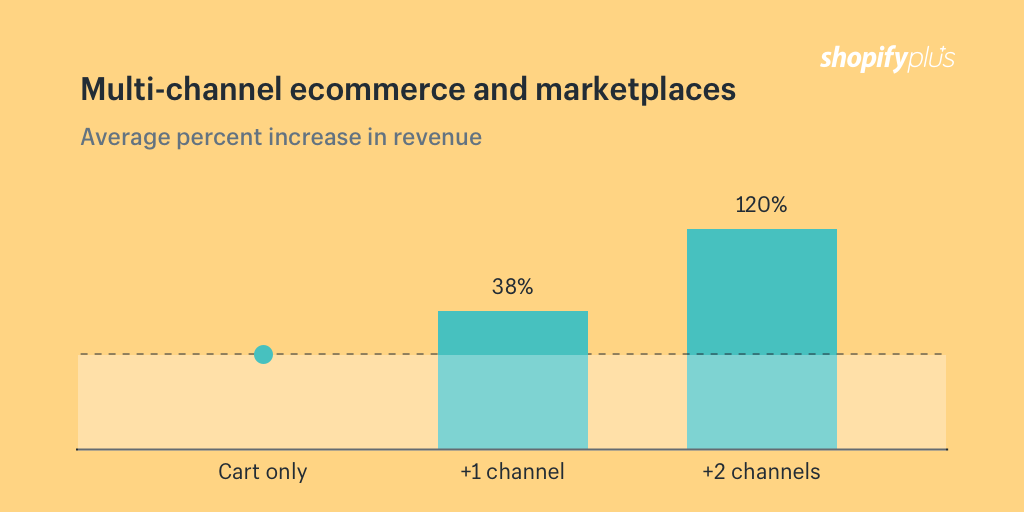
Is multi-channel ecommerce on eBay and Amazon the enemy? To find the answer, let’s look at …
- Big Numbers
- Account Types
- Built-In Advertising
- Channel Options
- Symbiotic Relationships
- Comparison Shopping
- Order Fulfillment
- Customer Experience
- Final Thoughts
Are you selling everywhere your customers buy?
Keep reading to discover the keys to eBay and Amazon, but if you’d like an executive guide distilling everything, download The Enterprise Guide to Multi-Channel Ecommerce.
Inside, you’ll get one-pagers detailing …
- Comprehensive data on the opportunities and threats
- Merchant spotlights for insights on top channels
- A checklist for selecting the right multi-channel platform
1. Big Numbers
As two of the biggest retail websites in the U.S. alone, you don’t want to ignore their power.
In 2017, eBay reported $9.6 billion net revenue, whereas Amazon clocked in at $178 billion net sales revenue. Of course, even their online traffic is yowza. In terms of US ranking, Amazon knocks the competition clear out of the water with 183 million unique monthly visitors. eBay, as the third most-visited site online, has 86 million unique monthly visitors, behind only Walmart with 87 million.
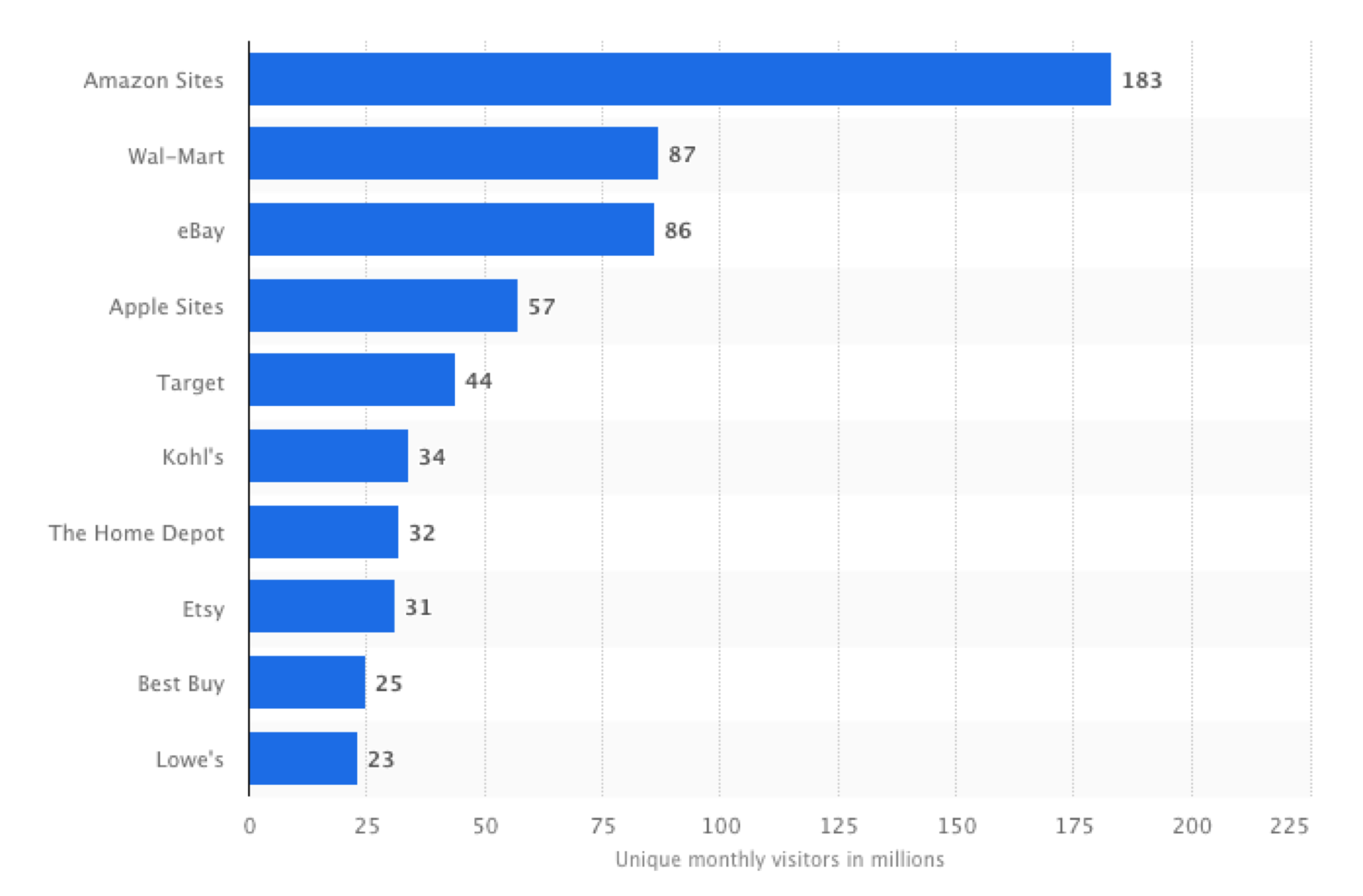
What’s even more interesting from an ecommerce perspective, is that 55% of product searches start on Amazon, which makes Amazon the biggest marketplace search engine where consumers trust to look up product information.
And you know those recommendations that show up at the bottom of the pages? The “Frequently Bought Together” and “Customers Who Bought This Item Also Bought” – well, those account for 35% of Amazon’s revenue. So if you are going to play with the big kids, make sure to optimize your products.

2. Account Types
With each multi-billion-dollar marketplace comes different types of accounts, so it’s important to understand your place in the ecommerce food chain.
A vendor is a business that sells to Amazon or eBay, which means the marketplace is reselling your products for profit. In other words, Amazon and eBay are your customers, not the end user, so it’s a B2B relationship.
A seller is a person or company that sells their products through multi-channel ecommerce listing software on eBay or Amazon. Think of the marketplaces as the middle-man, the go-between, the facilitator of sorts. You’re in the B2C market.
As a seller, you can either choose to have Amazon fulfill your orders or keep that process in-house.
The former (fulfilled by Amazon or FBA) means your products are housed in an Amazon warehouse and they take care of packaging and sending orders on your behalf. The latter (fulfilled by merchant or FBM) means Amazon is where the purchase is made, but you are still responsible for sending out the products and keeping track of inventory.
3. Built-In Advertising
Amazon and eBay offer dedicated on-platform advertising opportunities to maximize your growth natively.
What does this mean for your business?
These advertising solutions can help grow their businesses on their respective channels. eBay Advertising, for instance, allows brands to access their 167 million active buyers with multi-screen experiences, and identify users across channels, browsers, and devices.

Amazon Advertising also offers its retailers a multi-platform experience with Amazon Search for product searches, Amazon Ad Platform for static and video assets, and Amazon Media Group for higher-end managed services.
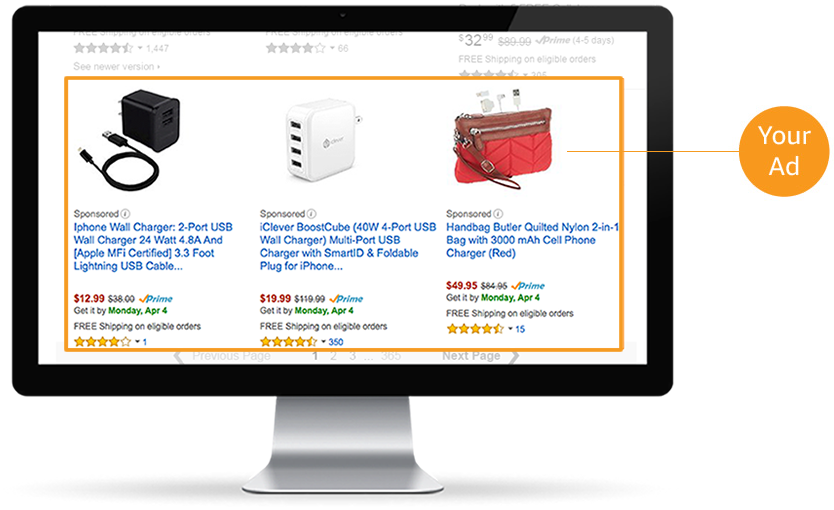
With the millions of products being offered on these platforms, it’s not just enough to establish multi-channel marketing on eBay and Amazon; you need to have skin in the game and ensure your products stand out from the competition.
Using their in-house advertising services will help ensure your products are top-of-mind when buyers are researching and shopping. Be sure to include the costs of different advertising solutions as part of your future marketing budgets so you can keep up.
4. Channel Options
A quick recap on omnichannel vs. muiltichannel: omni-channel retailing in commerce means creating a single, integrated experience for your customers across every touchpoint. A multi-channel ecommerce strategy allows your customers to purchase wherever they browse and shop, but leaves those touchpoints to operate independently.

So what does this have to do with the marketplace conundrum?
Everything. In today’s digital world, if you’re not present where your customers are, you’re missing out on a big piece of the pie (between 38% and 120% as we saw above).
You want to be where your customers are spending their time. Whether that’s eBay, Amazon, Facebook, Instagram, Houzz, BuzzFeed, or … follow the breadcrumbs and adapt accordingly. This goes beyond simply advertising and linking back to your website’s store:
“True multi-channel ecommerce does this natively in a way that honors consumer choice and intent.”
Knowing if your customers are browsing sites like eBay and Amazon is easy enough to figure out. eBay, for instance, provides segmented analytics via eBay Advertising. And similar information can be obtained from other marketplaces as well.
The moral of the story is: if you’re going to sell somewhere other than your website, you better damn well be sure your strategy is solid.
5. Symbiotic Relationships
Marketplaces like Amazon and eBay can give new brands the validation and credibility they seek in their infancy. Why? Because eBay and Amazon have been around for over 20 years, consumers trust products found on their sites.
Nolan Walsh, co-founder Thursday Boots, explains, “We realized it is hard for people to have faith in a new brand, especially for something as sensitive as footwear. We really liked the idea of Amazon being able to list our products side by side the bigger legacy brands. That helped validate our product.”

Thursday Boot Company lists staple and best-selling products on Amazon while reserving their new products for onsite
In most cases, multi-channel ecommerce on eBay and Amazon should complement your online store … ensuring your chosen channels don’t cannibalize on each other’s sales.
Understanding where your products fit into the marketplace ecosystem will help you create an important piece of the puzzle: your multi-channel strategy.
6. Comparison Shopping
Heed this warning: because marketplaces are popular and considered a one-stop-shop, you may be competing against your own products.
Last Fall, Shopify Plus and VaynerMedia created a podcast miniseries dubbed Hacking the Holidays. In episode four, “All About Amazon,” they discussed price controlling, BOGOs, and how resellers might cannibalize their own profits.
What this means is online customers are savvy; they know they can shop around for the best deals, and they know they can search for discount codes online.
They also know that in marketplaces like eBay and Amazon, it’s not uncommon for resellers to offer the same products at a lower price, even if it’s just a few dollars cheaper. But a few dollars for every lost sale can translate into tens of thousands, even potentially millions in lost revenue.
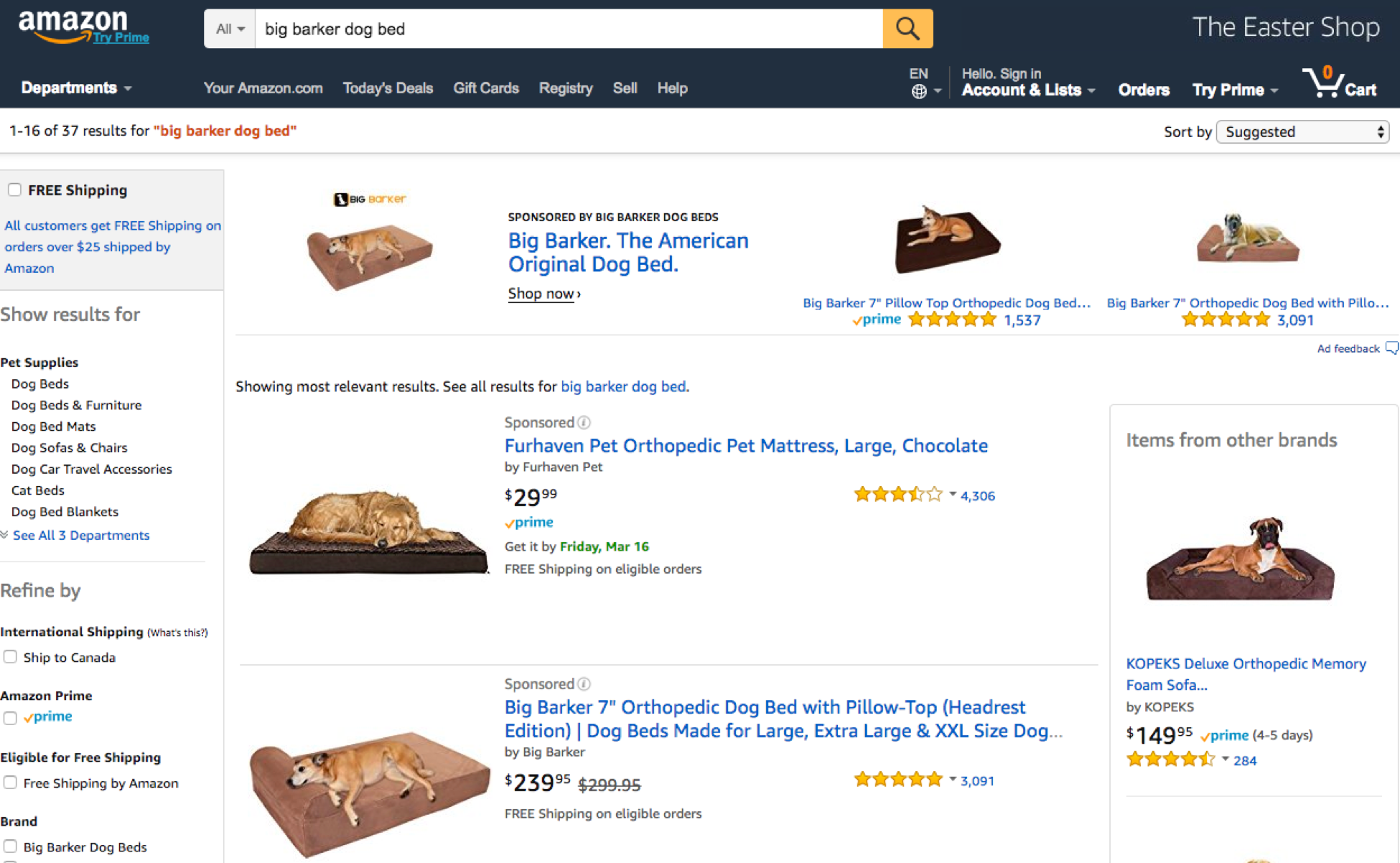
The lesson here is maintaining control of your products and prices is the only way to ensure a successful symbiotic relationship with marketplaces. This way, resellers or affiliates won’t take a commission or price gauge your own products.
7. Order Fulfillment
If you’re thinking of using Amazon or eBay to up your sales game, consider this:
Amazon and eBay are the leaders in fulfillment and you need to be able to keep up with their top-shelf customer service. Once you decide to be on these sites, you have to go all in. No more JV, you’re on the varsity team now.
Lee Elliott, vice president of digital media at VaynerMedia, puts it like this: sales and marketing on eBay and Amazon are not enough. You have to be able to keep up with the orders from an operations and fulfillment standpoint. You also need to give your customers the same brand experience no matter where they’re shopping.
What does this mean for your business?
How are you fulfilling orders now? Do you warehouse your inventory? Or do you work with third-party logistics (3PL)? Are you able to handle the potential exponential increase in sales volume without sacrificing customer service?
If you hummed and hawed at any of these questions, you might want to consider adding a warehouse management tool or using Fulfillment by Amazon (FAB) to take some of the burden (and profit) off your back.
8. Customer Experience
Regardless of where you offer your wares, remember to keep the customer’s experience at the forefront of all you do. If your customer’s experience isn’t seamless, you’ll damage your brand more than anything else.
As noted in this article on multi-channel listing software, “You want every one of your shoppers to have the same positive shopping journey – each time, across each channel.”
What does this mean? Integration. And we’re not just talking about logos and images (although those are important too).
Provide the same brand experience everywhere you can be found, commit to fulfilling all orders regardless of where they came from, and make sure you can compete with the likes of Amazon and eBay.
Now you’re wondering, How? By selecting the right multi-channel software so you can maintain and track orders, inventory, customer records, promotions, analytics, and much more. By setting yourself up for success on the back-end of your business, your customers will have a consistent experience at the front-end.
9. Final Thoughts
Is multi-channel ecommerce on eBay and Amazon the enemy? They can be. Especially if …
Your customers are shopping there and you don’t have a specific strategy for these channels.The best way to tackle the marketplace beast is to learn from your mistakes and fix them quickly. The digital world waits for no business. Test, review, update. rinse, and repeat. It’s all about learning from your mistakes and fixing them post haste.
The bottom line is, there is no black or white when it comes to eBay and Amazon. It may or may not be a fit for your brand, and either way, it’s ok.
Want an executive summary of multi-channel ecommerce?
That’s exactly why we created The Enterprise Guide to Multi-Channel Ecommerce.
Inside, you’ll get one-pagers detailing …
- Comprehensive data on the opportunities and threats
- Merchant spotlights for insights on top channels
- A checklist for selecting the right multi-channel platform



